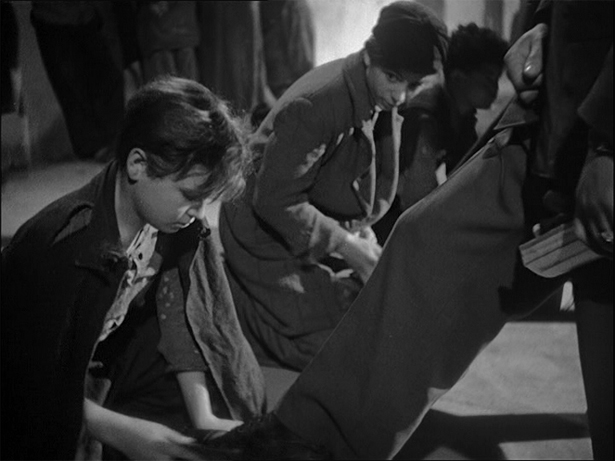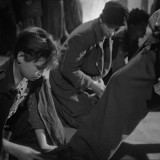Ever wondered what started the Oscar for Best Foregin Language Film category? It was Shoeshine, Vittorio De Sica‘s fifth film that initially received a Special Academy Award in 1948 and two years later for his masterpiece The Bicycle Thief.

Shoeshine is a special film for many reasons. First, it marks the start of one of the most creative collaborations between De Sica and screenwriter Cesare Zavattini. Together they produced some of the best expressions of the Neorealism in Italian cinema with gems such as The Bicycle Thief (1948), Miracle in Milan (1951), and Umberto D (1952).
De Sica is responsible for 34 films and starred in some 150 films, that’s how he would typically finance his films. In Shoeshine, we can see a common theme in Neorealism, which is the lost of innocence, specifically of children who are thrown into a rough adult world, accentuated further here where neither support groups – the family or social systems – are available.
Like most films in the Neorealism genre right after WWII, there is an indifferent outside observer camera movement, scenes are shot in long takes on location, themes of lack of human solidarity, collapse of social system deserting the common man, and most importantly the use of non-professional actors.
The inspiration for this film came for De Sica from meeting two shoeshine boys Scimmietta (‘Little Monkey’) and Cappellone (‘Big Hat’) that represented the many kids in the streets of Rome who made their living by polishing shoes of the American soldiers, shouting Sciuscià, a Neopolitan corruption of the English word “shoeshine” used to attract soldiers. These two boys were not selected for the role as De Sica decided they were two ugly. Instead, two other street boys, Franco Interlenghi playing the mature Pasquale Maggi and Rinaldo Smordoni, playing the younger Giuseppe Filippucci – had their film career debut.
After the success of the film both boys were offered many projects, but whereas Interlenghi’s career flourished with 75 films to his credit, most notably starring in Fellini’s I Vitteloni’s (1953), Somordoni, did another 2 films and then broke away from show biz ending up as public transport worker.
The film obtains its power by clearly illustrating how fragile human relationships are where two boys’ strongest friendship is turned upside down due to vicious turn of events beyond their control. Like life truly is. In this sense, without playing the blame game De Sica shows how bad circumstances can play a huge role in the lives of people in postwar Italy. Italian cities where half destroyed, social systems where barely functioning, so who can condemn children if they opted for stealing, and prison guards for blackmailing? They’re all part of a long food chain that merely tried to survive.
Legendary film critic, Pauline Kael aptly put it:
“It is one of those rare works of art which seem to emerge from the welter of human experience without smoothing away the raw edges, or losing what most movies lose–the sense of confusion and accident in human affairs.”

